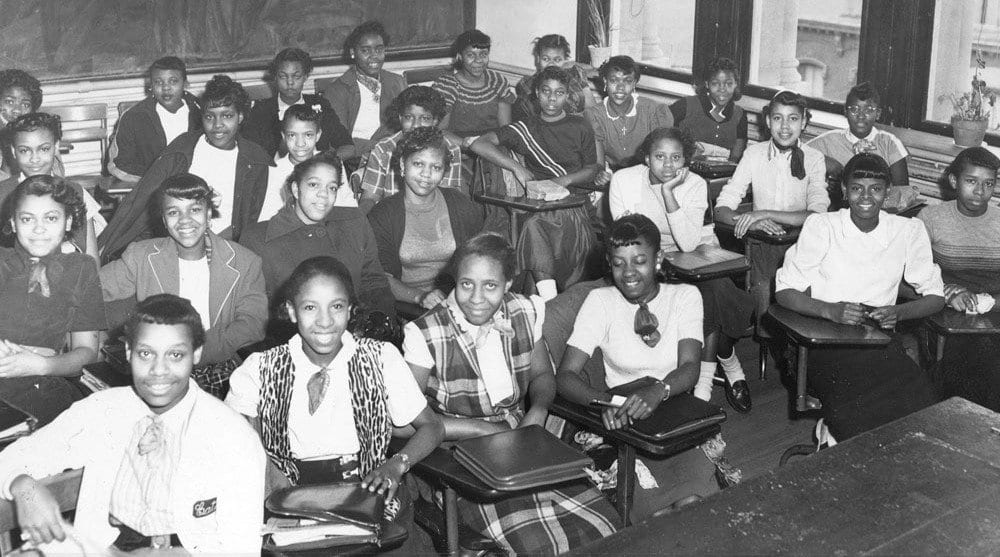School has existed for years. The earliest schools date way before the birth of Christ. The oldest school still in operation is the University of al-Qarawiyyin in Fes, Morocco. It was established in 859. But guess what! School still exists! Education has managed to survive and improve for over 5000 years, and now even has a specific time slotted just for education in every persons life. So how has education changed over the years?

Now this post would be thousands of words long if I went all the way back to the 35th century BC, which is when the first documents of education and literary skills were discovered. So to save you the trouble and the time, this post will be focusing on changes in education in the 20th century. In the early 1900s, education had become a major part of many people’s lives. A lot of the principles we see today had been set. School was not mandatory, but many states in the US would push many families to educate their kids. Parents could send kids to private, religious, or public schools, but public schools were bound by the Establishment Clause which stated that the government could not favour one religion over another through education, which includes atheism.

The classic multigrade school room quickly began to disappear after the turn of the century, to be replaced with a 8-4 school system. 8 years elementary and 4 years secondary. This was quickly replaced in 1910 with a 6-3-3 system. 6 years of elementary, 3 junior high, and 3 senior high school. This system can still be seen today in many states and provinces across North America. It has been altered, but many school systems still have a 7-3-4 education system. Elementary, Middle, and High school. The 1900s also introduced a new period in education. More preschools were opened, and more and more teachers designed for 5 year old kids and below were being produced. These steps of pre elementary education were the first steps towards Kindergarten.
With the introduction of the new school system came the idea that subjects were to be taught in a uniform fashion to every student, year by year. With this idea came a word that strikes fear to students even today: tests. Tests were around in the 19th century, but with the new idea that subjects were to be taught by age, tests began to become more and more important. It became so important that it became a problem. Teachers viewed the test results of students as performance reflections, and so many would pressure struggling kids to drop out before tests. Tests were now the key to moving onto the next level of the 8 grade schooling system, and are still very important today.

The 1930s brought a post-war recession, known as the Great Depression. Schools couldn’t pay teachers, other schools closed down, and some states resorted back to the multigrade classrooms which had largely been shut down in many parts of the US. There were positives of the Great Depression however. Of the schools that stayed open, many experienced a massive increase in students. Work was hard to come by, so many kids sought higher forms of education in case the depression lasted years. Another positive was that teachers work conditions dropped massively. This may seem like a bad thing, but unions began to fight for teachers rights and conditions. School systems began to standardize the curriculum, and more and more Americans began to support education, even if radical conservative groups viewed the spread of wealth, unions, and civil rights classes were communistic.
After WWII, education experienced a massive shift in traditions and ideals. Concepts of equality and equity in education was introduced before WWII, but it wasn’t until the 1950s that the issues of race, sex, religion, and discrimination in education were addressed. The approach towards equity shifted, with school systems actually taking steps towards equity, instead of just toying with the idea. This shift was felt well into the 1970s, when African-American students achieved major gains in education.

In 1958, governments addressed students with disabilities. $1 million dollars of the time ($9.25 million today) was given to support the aid of children with learning disabilities. In 1975, The Education for All Handicapped Children Act was introduced, which improved facilities and special programs for students with disabilities. In 1990, the act was renamed the Individuals with Disabilities Education Act, and was also revised to include support for the training of teachers who would support children with learning disabilities.
Education underwent many massive changes in the 20th century. A lot of the principles we have in education today, like equality, were established the past 100 years. It makes you think just how segregated and sexist education must have been years prior to the change of perspective that education experienced. This shift only happened halfway through the century as well.

Education today has progressed a lot since the 1 room schools, but a lot has stayed the same, and a lot about education today can be traced back to these primitive schools. I really wish I could experience what life was like for those students. I’ve been in those classrooms before, and seen what the conditions were like, but how did teachers enforce discipline, how did teachers pay attention to every year and every child? What else has stayed the same since the 1800s? If you know something I didn’t address in this post, leave a comment below!